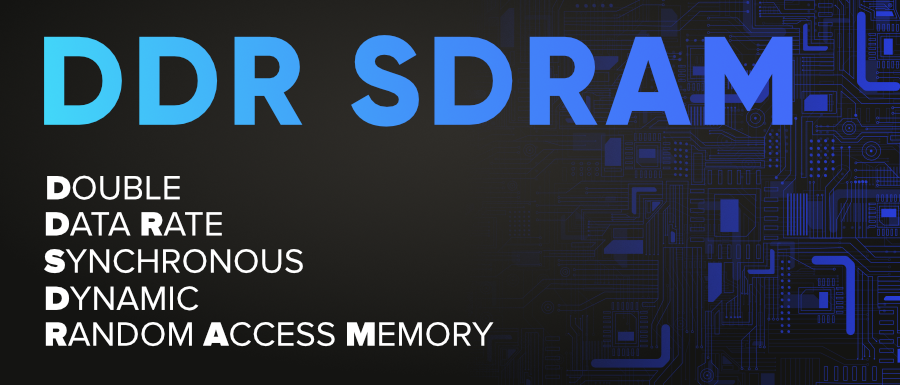DDR-SDRAM Full Form
Last Updated :
17 May, 2020
DDR-SDRAM stands for Double Data Rate Synchronous Dynamic Random Access Memory, it is a type of memory used as RAM in computers, mobiles etc. This is also known as DDR1 SDRAM. It is a combination of integrated circuits which use as volatile memory. Before DDR there is only SDRAM, this is not efficient as DDR. DDR is a new technology that doubles the data rate for transferring data without increasing the frequency of the clock. DDR-SDRAM access data on both the leading edge and the falling edge of the clock signal. The bus transfer rate of DDR is between 266 to 400 MT/s(Mega Transfer Per Second), and the frequency was nearly equal to 100 MHz to 400 MHz.

There are four variant of DDR-SDRAM, see below with there descriptions-
| Variant |
Clock Frequency |
Transfer rate(in MB) |
| DDR-200 |
100 to 200 MHz |
1600 MB/s |
| DDR-266 |
133 to 266 MHz |
2100 MB/s |
| DDR-333 |
166 to 333 MHz |
2700 MB/s |
| DDR-400 |
200 to 400 MHz |
3200 MB/s |
History
At first SDRAM comes in the market by Samsung Electronics in the year 1992. The model name of that SDRAM chip was KM48SL2000 , it was made by CMOS fabrication process and has 16 MB of memory. Then from the year 2000, the SDRAM was becoming more popular for modern computers. But it cannot handle the processing of much data at a time, the transfer rate of data is not good so that DDR-SDRAM comes in the market,
Like SDRAM, the first DDR-SDRAM also released by Samsung Electronics in the year 1998, the prototype of this was demonstrated in 1997. The chip has a memory of 64 MB, which was twice of the SDRAM.
Then JEDEC finalized specifications of DDR RAM by their standard for the data rate of DDR RAM in June 2000. These standards are divided into two types –
Specification for memory chips
Specification for memory modules
JEDEC is a Solid State Technology Association of the United States. This standard allows 128 MB of memory.
Then from August of 2000, motherboards were released with DDR-SDRAM support.
Characteristics
| Item |
Description |
| Type of operation |
Synchronous |
| Data transfer rate |
200 to 400 MT/s |
| Clock frequency |
100 to 200 MHz |
| Supply voltage |
2.5V |
| Clock input |
Differential clock |
| Burst length |
2, 4, 8 |
| Modules |
184 pin DIMM unbuffered registered and 200-pin SODIMM and 172-pin MicroDIMM |
| Prefetch Bit width |
2 Bit |
| Interface |
SSTL_2(Stub Series Terminated Logic) |
| Data strobe |
Single data strobe |
| I/O width |
x4 or x8 or x16 or x32 |
Advantages
- It has higher clock speed and frequency than normal SDRAM.
- It accesses data during both halves of the clock cycle.
- The timing of a DDR memory bus is more sensitive than with an SDR bus, so it is faster than SDR
- The path layout of a main board of DDR does not have to be re-designed again, the main boards based on 4-layer technology will continue to be sufficient
- DDR-SDRAM uses DIMM boards with the same dimensions as with the SDRAM for memory module, so its not much difficult to implement DDR from SDRAM module.
- Bus effectiveness increased to 85% than SDRAM.
- Its also power efficient, its need only 2.5 volts to operate while SDRAMs are need 3.3 to 3.5 volts
- Its Doubles the transfer rate of data than SDRAM
- It has much memory for use, so big tasks are easily be done by DDR-SDRAM.
Disadvantages
- It cannot be used with old motherboards.
- Chip and supported motherboards Costs are high.
- Only an average of about 5% performance increase than SDRAM.
- It loses data when power is OFF.
- It is not backward compatible
- It is not widely available in local market so goes international market for it.
- Bus frequency is higher than SDRAM but the efficiency is not much higher.
Like Article
Suggest improvement
Share your thoughts in the comments
Please Login to comment...